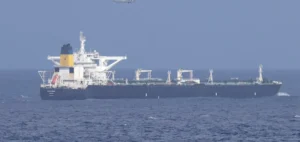Recent attacks by Houthi rebels on oil tankers in the Red Sea mark a strategic escalation.
On September 2, the Houthis attacked the Saudi-owned oil tankers Amjad and the Greek-based Blue Lagoon 1, confirming their intention to disrupt shipping in a strategic route for global oil supplies.
These actions are not isolated; they are part of a pattern of pressure on regional and international players.
According to Maged Al-Madhaji of the Sana’a Center for Strategic Studies, these attacks are aimed at attracting international attention and influencing global political decisions.
Iran’s involvement, tacitly supporting these actions, reveals a broader dimension of energy geopolitics.
Teheran, seeking to maintain high oil prices, is using these tensions to strengthen its position in the face of international sanctions and to try to negotiate with Washington again.
Brenda Shaffer of the US Naval Postgraduate School points out that this strategy could prevent more direct action against Iran’s oil infrastructure, as long as oil price volatility remains favorable to Tehran’s interests.
Military response and impact on maritime safety
The US response to these attacks was immediate, with the destruction of several missile systems in Houthi-controlled areas of Yemen.
The aim of this response was to protect the free movement of ships in a region essential to global energy trade.
However, the absence of a clear and coherent US policy in Yemen, as Al-Madhaji points out, makes the situation even more complex.
The ambiguity of the US position, motivated by broader geopolitical considerations including nuclear negotiations with Iran, limits the effectiveness of one-off military actions against the Houthis.
Damage to vessels such as the MV Delta Sounion, set on fire after an attack, and the Amjad, carrying almost two million barrels of oil, raises concerns about the safety of shipping routes.
These events entail increased risks of disruption to crude oil supply flows, which can influence prices on world markets.
Ongoing rescue operations, involving international forces, illustrate the challenge these attacks represent for regional stability.
Impact on energy markets and regional outlook
The Houthi attacks are having a direct impact on oil markets, creating uncertainty about the security of supplies.
Investors are keeping a close eye on these developments, as any prolonged disruption could affect crude prices.
The situation also shows how Yemen has become a field of confrontation by proxy, where several regional and international players exert their influence.
This further complicates the management of energy security and the formulation of coherent policies by the states concerned.
The medium-term outlook for the region remains uncertain.
International cooperation is crucial if tensions are not to escalate.
However, as long as regional players see these attacks as a means of exerting political pressure, the Red Sea will continue to represent a risk to shipping and global energy supplies.
A concerted approach, involving all stakeholders, seems essential to manage the complex dynamics at play and limit the repercussions on global oil markets.






















